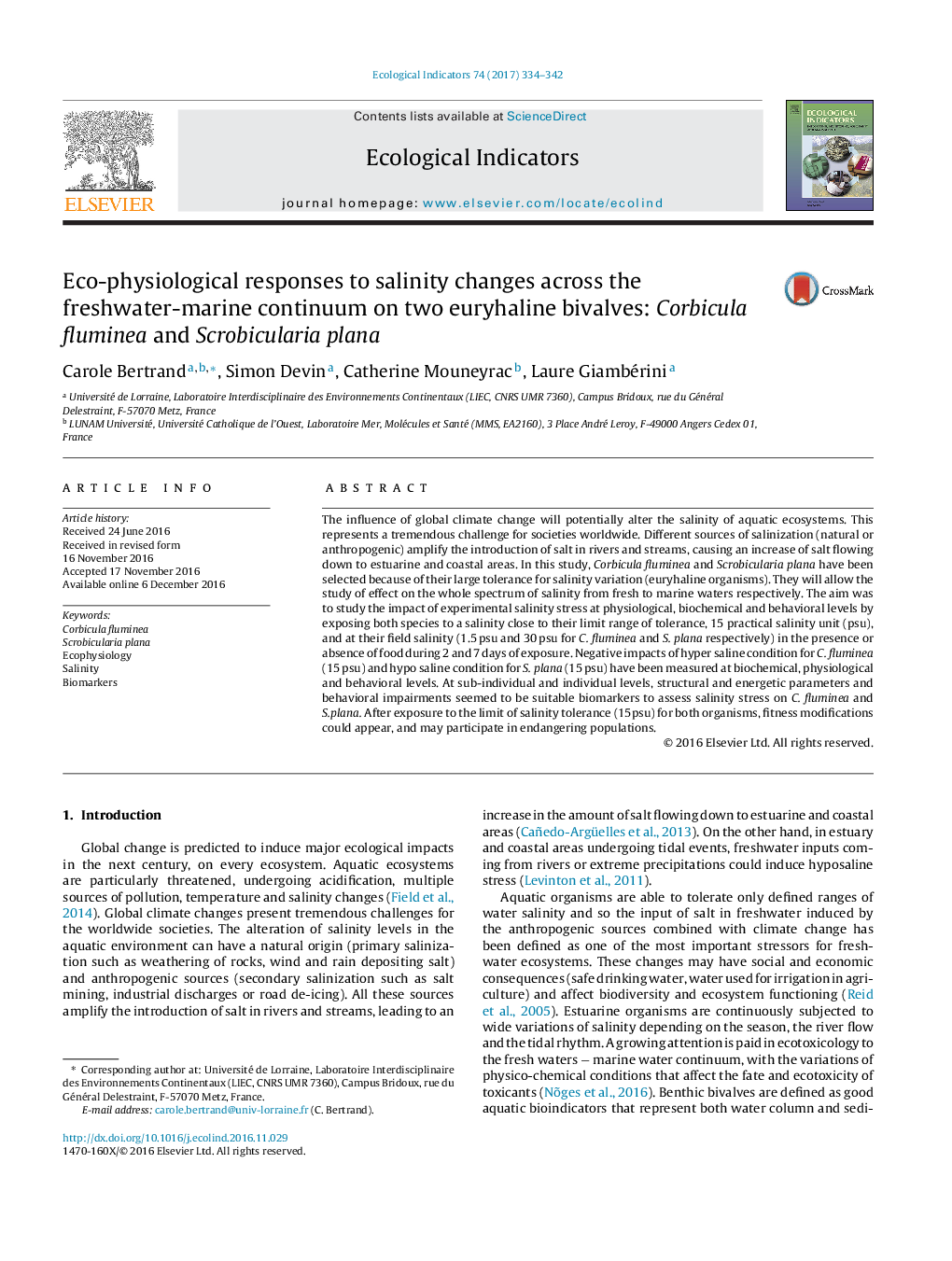| کد مقاله | کد نشریه | سال انتشار | مقاله انگلیسی | نسخه تمام متن |
|---|---|---|---|---|
| 5741860 | 1617128 | 2017 | 9 صفحه PDF | دانلود رایگان |

- Salinity tolerance is generally only assessed through mortality or condition index.
- Two euryhaline species were exposed to their range limit of salinity tolerance.
- Physiological and behavioral responses evidenced a marked effect of salinity variation.
- Salinization may threaten even euryhaline species.
The influence of global climate change will potentially alter the salinity of aquatic ecosystems. This represents a tremendous challenge for societies worldwide. Different sources of salinization (natural or anthropogenic) amplify the introduction of salt in rivers and streams, causing an increase of salt flowing down to estuarine and coastal areas. In this study, Corbicula fluminea and Scrobicularia plana have been selected because of their large tolerance for salinity variation (euryhaline organisms). They will allow the study of effect on the whole spectrum of salinity from fresh to marine waters respectively. The aim was to study the impact of experimental salinity stress at physiological, biochemical and behavioral levels by exposing both species to a salinity close to their limit range of tolerance, 15 practical salinity unit (psu), and at their field salinity (1.5Â psu and 30Â psu for C. fluminea and S. plana respectively) in the presence or absence of food during 2 and 7Â days of exposure. Negative impacts of hyper saline condition for C. fluminea (15Â psu) and hypo saline condition for S. plana (15Â psu) have been measured at biochemical, physiological and behavioral levels. At sub-individual and individual levels, structural and energetic parameters and behavioral impairments seemed to be suitable biomarkers to assess salinity stress on C. fluminea and S.plana. After exposure to the limit of salinity tolerance (15psu) for both organisms, fitness modifications could appear, and may participate in endangering populations.
Journal: Ecological Indicators - Volume 74, March 2017, Pages 334-342